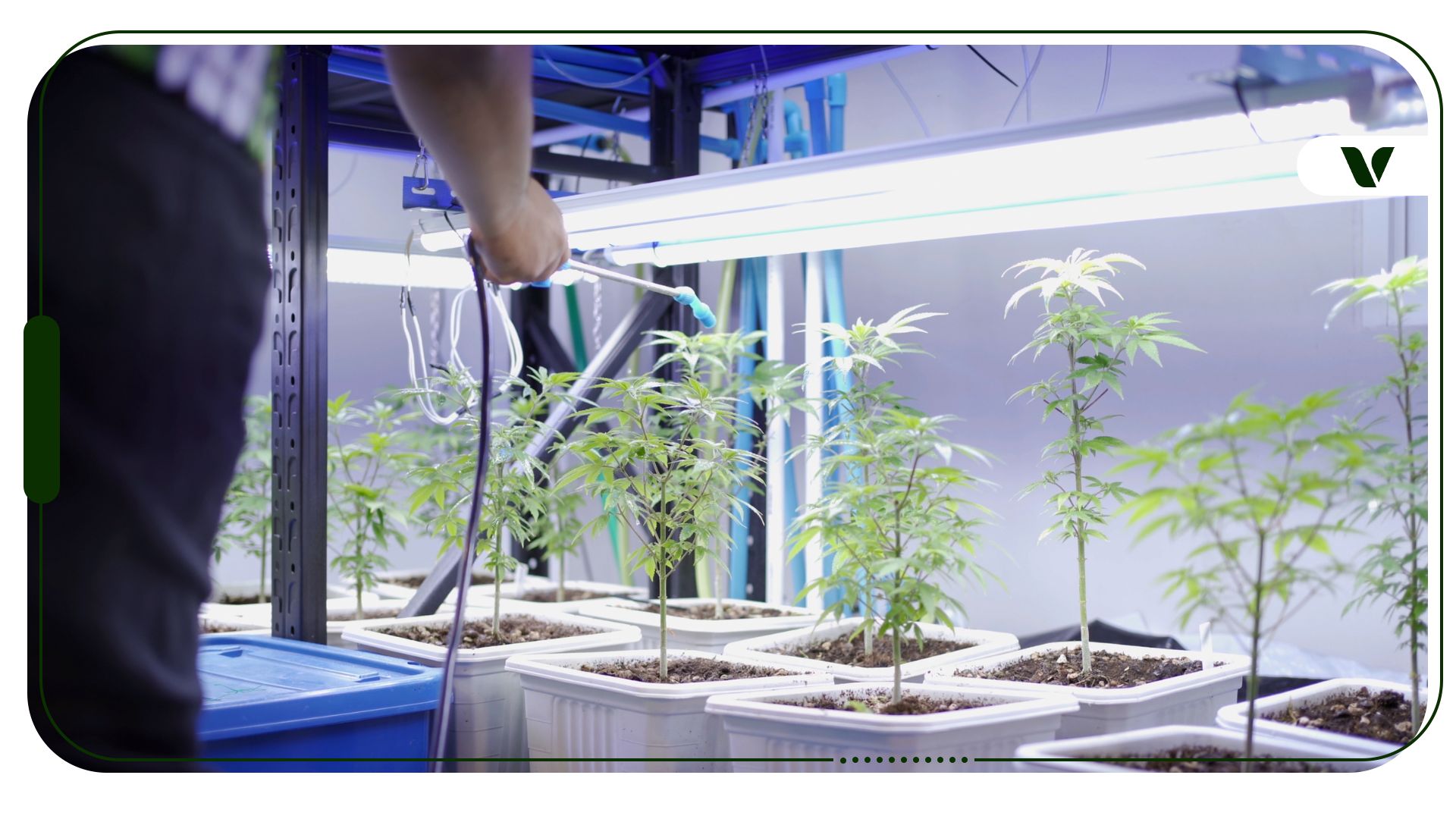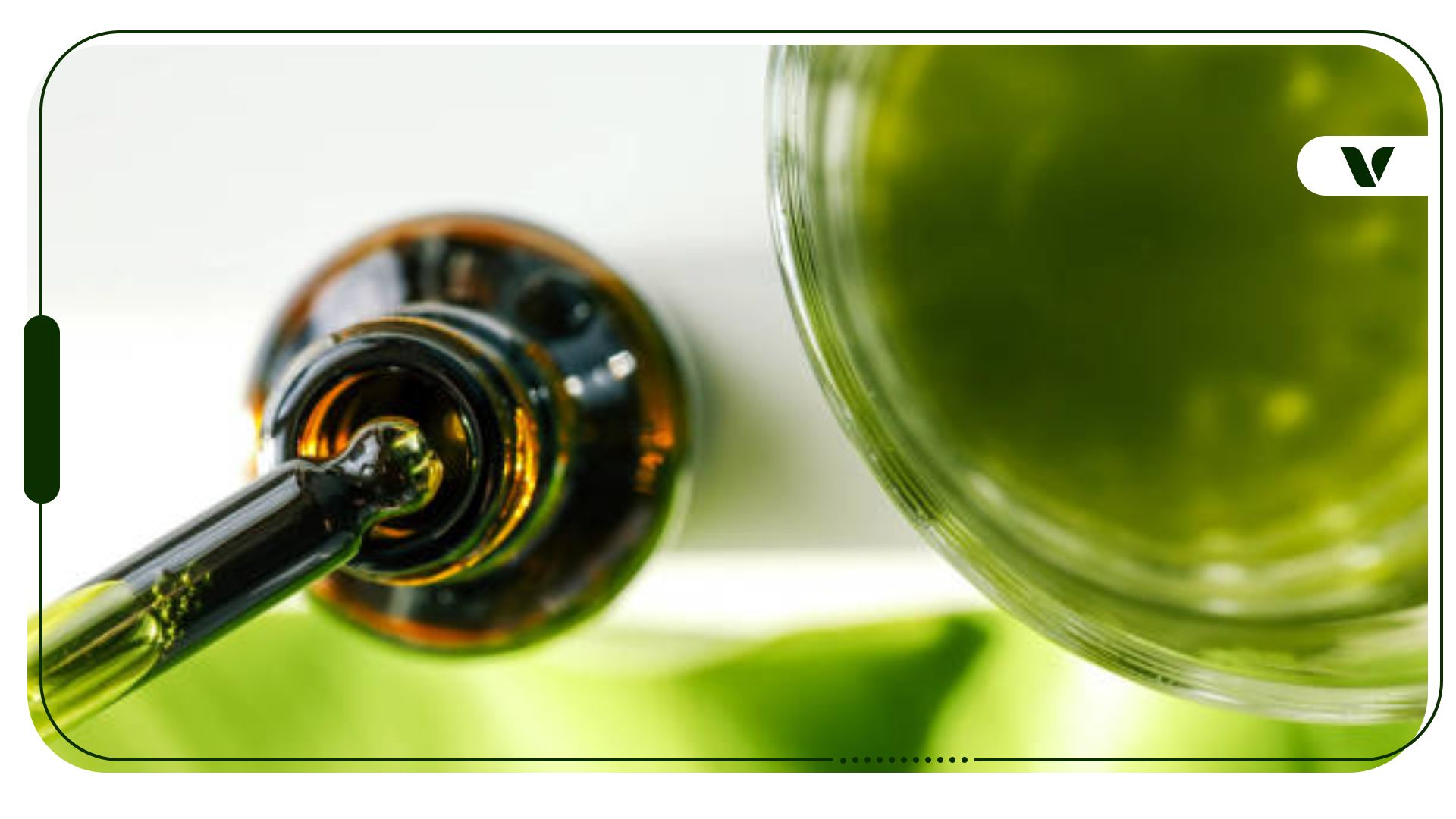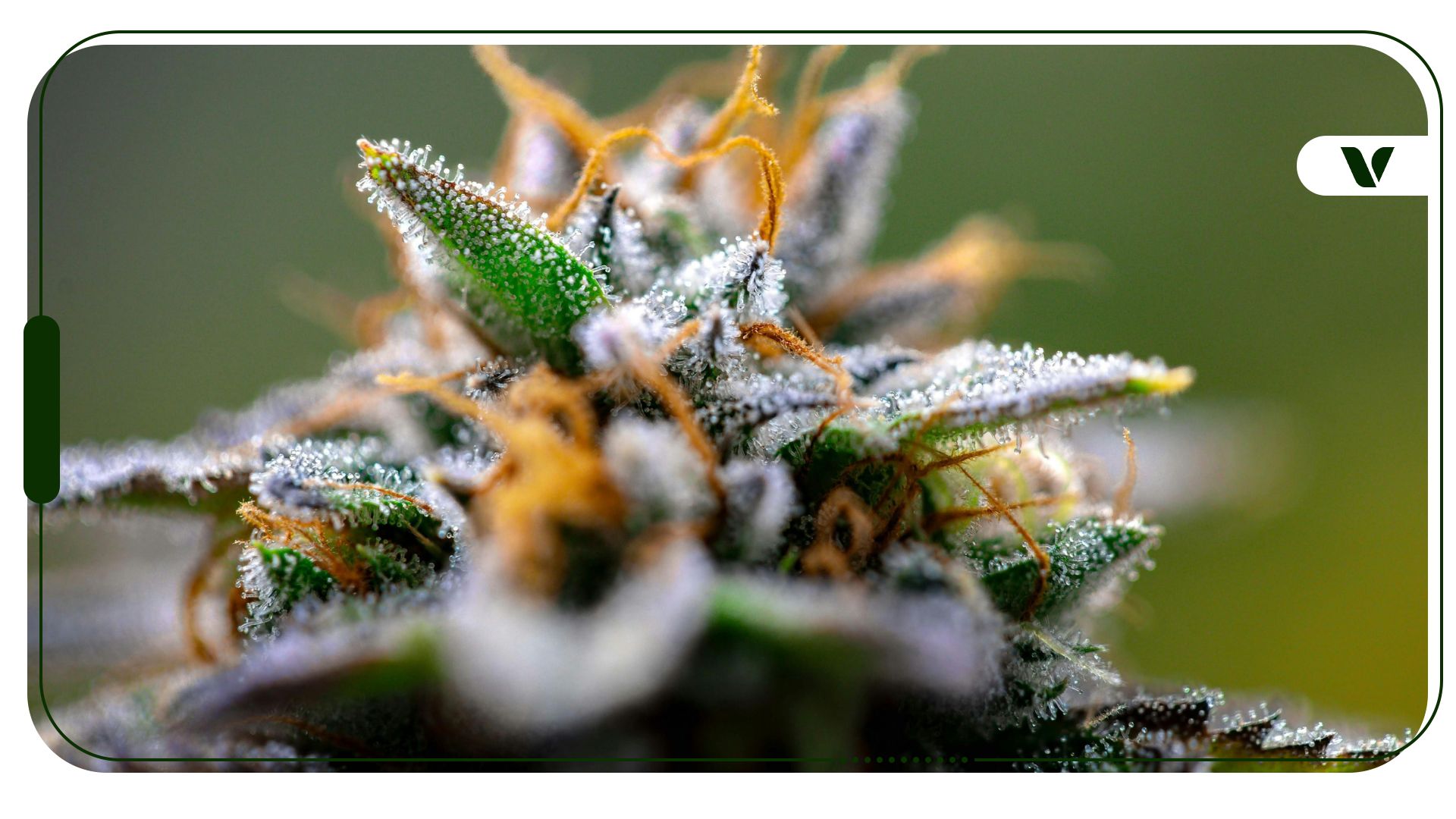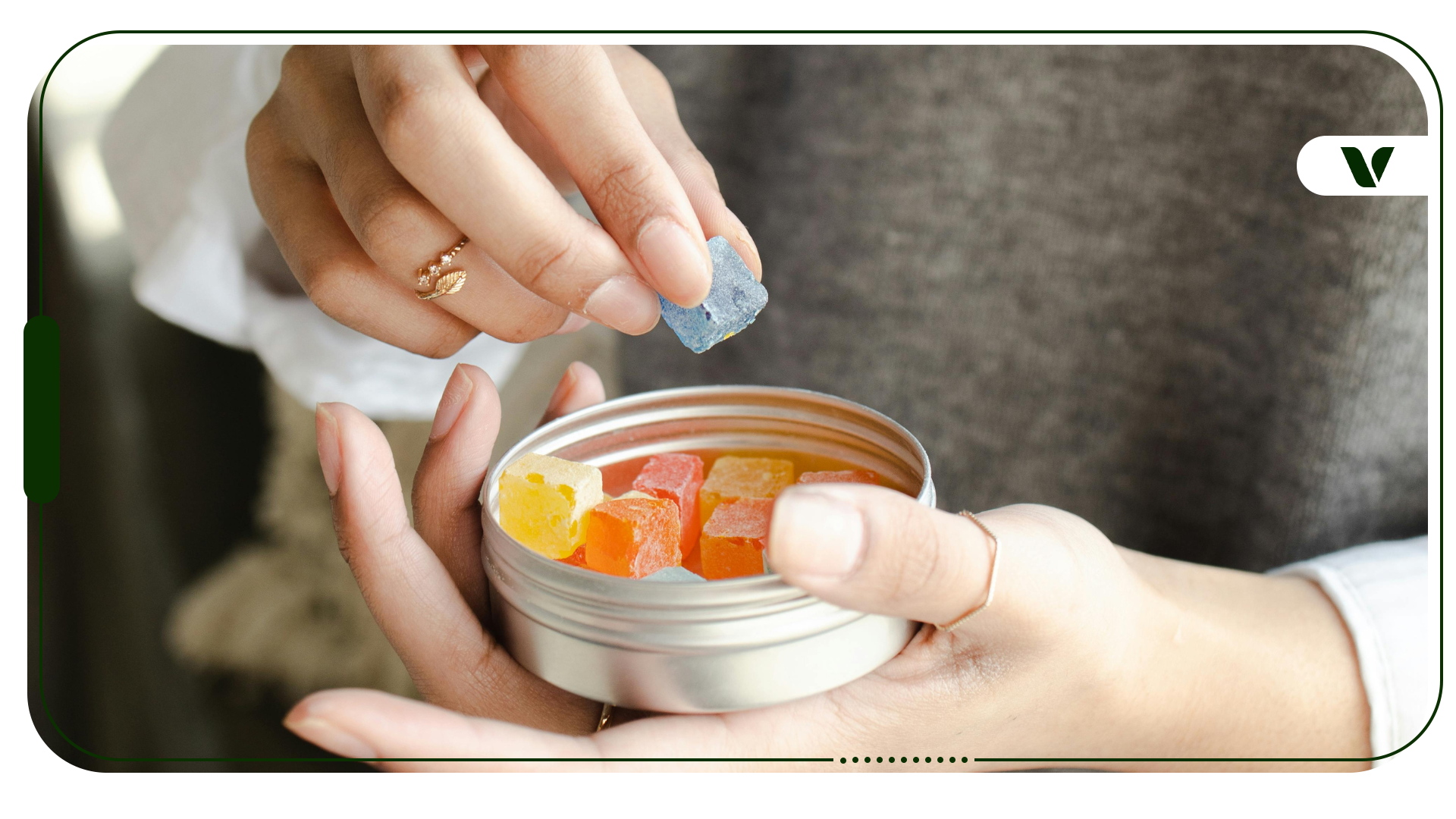Growing weed indoors is a great year-round option that can provide total control over the growing environment. With the right conditions, indoor cannabis crops can thrive, which means increased potency, flavor, and yield.
Choosing the right fertilizer is one of the most important factors when it comes to indoor cannabis growing. Cannabis plants require a well-balanced nutrient profile to ensure they grow properly.
In this article, you’ll learn the basics of cannabis fertilizers, the different types of cannabis fertilizers, the best fertilizers for each stage of growth, how to make homemade cannabis fertilizers, and how to troubleshoot common fertilizer issues.
Understanding The Basics of Cannabis Fertilizers
A vital part of healthy, thriving indoor cannabis cultivation is the nutrients the plant receives. A balanced and consistent supply of nutrients means the indoor-grown weed plants will develop properly and have support nutritionally.
The nutrients in fertilizer that indoor-grown cannabis plants need can either be naturally occurring or synthetic. These nutrients can be added to the water you use on the weed plants or mixed directly into the plant’s soil.
Macronutrients, which include nitrogen, phosphorous, and potassium, are needed in larger quantities and forms as they are the building blocks of the cannabis plant structure. The ratio of nitrogen, phosphorous, and potassium is also known as the NPK ratio, which plays a significant part in the balance of these essential nutrients and the health of the weed plant as it grows.
Micronutrients, on the other hand, are also needed for optimal growth. Micronutrients consist of calcium, magnesium, iron, copper, and sulfur, along with a few others. While you need lower levels of these nutrients versus macronutrients, they still play a vital role in indoor cannabis plant growth. They also boost any depleted elements in the soil that occur as the plant grows.
Cannabis fertilizers can be used on the plant in the following ways:
Liquid Fertilizers are used through two methods. Some liquid fertilizers are intended to be mixed with water before being given to the plant, while others are diluted with water and sprayed on the plant’s leaves.
Powder Fertilizers are mixed into the soil or added on top of the soil.
Organic, Synthetic, and Hybrid Fertilizers for Indoor Cannabis Plants—What’s the Difference?
Each type of fertilizer is derived from differently sourced nutrients, which means each type has its pros and cons. You should consider cultivation goals when choosing between these three types of indoor cannabis fertilizers.
Organic Fertilizers
Pros: A more natural and holistic approach to fertilizers for indoor cannabis plant growth is organic fertilizers. Organic fertilizers offer a more gradual and slow release of nutrients. This is a great way to reduce the risk of common cultivation issues like nutrient runoff or over-fertilization. The soil structure can also be improved with organic matter-based fertilizers, which helps with proper water retention and aeration.
Cons: Because of the slower release of nutrients, this means potentially slower growth when compared to synthetic fertilizers. It can also take longer for organic fertilizers to break down and release nutrients.
Synthetic Fertilizers
Pros: Synthetic fertilizers are designed to contain very specific nutrient ratios, which leads to more controlled and faster growth along with potentially higher yields of indoor cannabis plants. More precise nutrient ratios are also helpful to have better customization for each stage of the cannabis plant’s growth. Nutrient level consistency is a pro of synthetic fertilizers, meaning more predictable results for growing plants.
Cons: When used long-term, synthetic fertilizers might degrade soil health as they reduce the beneficial microbial population and organic matter within the soil. Since healthy soil is important for cannabis plant nutrient absorption, this could affect the plants negatively. Chemicals and residue from the fertilizer can also build up, potentially affecting the safety and taste of the buds. This is an important consideration for those who are growing cannabis for medical reasons.
Hybrid Fertilizers
Pros: Combining organic and synthetic nutrients is an option that allows the plant to reap the benefits of both. This could look like starting with organic or homemade soil for a nice soil nutrient base. Then, you can use a synthetic fertilizer during the mid to late growth stages, like flowering, to boost bud production.
Cons: This method can be trickier as it requires more research and watching the nutrient levels closely if you’re experimenting with using more than one type of fertilizer in different stages. Experimenting with multiple types of fertilizer could hold a slightly higher level of plant health risk due to over or under-fertilizing when compared to strictly using just one or the other.
The Best Indoor Cannabis Fertilizers For Each Growing Stage
Each stage of development for growing indoor cannabis plants requires different levels of nutrients for optimum results.
Many fertilizers are designed for a specific purpose or stage of growth, which is a great way to know if there is a proper balance of nutrients for that growth stage.
Seedlings
For the first few weeks after germination, the seedlings can thrive without needing additional fertilizers.
Using fertilizer on cannabis seedlings often begins around the time the second set of leaves appears. A diluted or light/low concentrated and balanced fertilizer is typically ideal for this stage of growth. That way, the seedlings aren’t overwhelmed. As the seedling matures, you can gradually increase the concentration and use of fertilizers.
Phosphorus and potassium are two of the most important nutrients for seedlings, as they promote strong roots, leaves, and stems. 1-1-1 or 1:2:1 NKP ratios for fertilizer are best for continued seedling development.
If the dark green color appears to be fading in your seedling, additional fertilizers like a seaweed solution can be sprayed on the cannabis plants to add additional minerals and energy for the plant.
A popular commercial fertilizer for the seedling stage is the Fox Farm Seed Starter.
Vegetative
Strong roots and vigorous plant growth are important during this growth stage.
Typically, a higher concentration of nitrogen and lower levels of potassium and phosphorus are needed during vegetation. Be sure any fertilizers you use in this stage reflect these nutrient levels.
Nitrogen is a crucial nutrient for chlorophyll, which converts sunlight to energy. It is also one of the nutrients that helps develop protein, which promotes the stronger growth of cannabis plants.
Phosphorus allows for a more rigid growth as the cannabis plant develops from the seedling stage. If the phosphorus levels are too low, you may see a purple hue in the leaves.
Some popular commercial fertilizers for the vegetation stage of growth include:
Flowering
Nutrients in the fertilizer should be adjusted to support flower production and resin development. During the flowering stage of indoor cannabis growing, higher levels of phosphorus and potassium with lower levels of nitrogen are best.
Some common fertilizers for the flowering stage of growth are:
Making Your Own Cannabis Fertilizer
Homemade fertilizer can help indoor cannabis plants grow and develop because of the minerals and organic compounds they (you!) create.
First, composting will be necessary to create nutrient content. Common ingredients for composting include:
- Coffee grounds
- Banana peels
- Citrus peels
- Tea bags
- Vegetable peels
- Eggshells
- Bat guano
- Worm castings
- Tree leaves
- Bone and fish meals
- Kelp
- Rock dust
- Herbs (such as nettles)
- Cooking water used to boil veggies
- Manure
- Wood ashes
- Grass clippings
- Various kitchen scraps
After you’ve created a healthy compost, you can make compost tea used to fertilize the cannabis plants. This is sprayed onto the foliage or added to the water used for the plant’s soil.
What You Will Need:
- 5-Gallon Bucket
- Large Mesh Bag
- Non-Chlorinated Water
- Organic Compost
Steps to Make Compost Tea:
- Fill the bucket ¾ of the way full using non-chlorinated water.
- Fill the mesh bag with compost.
- Place the mesh bag in water.
- Place the bucket in a dark, cool environment.
- Stir the mixture daily for 1-2 weeks.
- Strain the compost and utilize the compost-infused water (compost tea) to water your plants!
While homemade fertilizer is often cheaper, it can also be a more labor-intensive, complex, and lengthy process to get just right for indoor cannabis growing. Over-fertilized or under-fertilized cannabis plants may have devastating issues that ruin your crop.
Keep this in mind when deciding whether to make a homemade fertilizer versus purchasing a commercially-made fertilizer.
Troubleshooting Common Fertilizer Issues
Both under and over-fertilizing indoor cannabis plants as they grow can be detrimental to the quality of the flower. Once harvested, this can lead to issues like harsher smoke since the nutrients obtained during growth remain in the buds after harvest.
Common Signs of Over-Fertilized Indoor Cannabis Plants
- Nutrient Burn: When the cannabis plant takes on more nutrients than it can handle, nutrient burn can occur. Nutrient burn leads to the cannabis leaves turning brown, yellow, extremely green, or bend at the tips. Nutrient burns can also cause root damage or foliage death.
- Root Stress: Higher concentrations of nutrients can impair root function, such as by inhibiting water or nutrient intake.
- Harsh Flower: When overfertilized, the buds may be harsh to smoke after being harvested because they are full of excess nutrients.
Common Signs of Under-Fertilized Indoor Cannabis Plants
- Stunted Growth: Nutrient deficiency, especially nitrogen deficiency, can cause reduced photosynthesis, leading to poor growth. This means the leaves, branches, and flowers start to become dormant.
- Poor Root Development: A lack of certain nutrients, like phosphorus, leads to an underdeveloped root system. This can limit nutrient intake and overall cannabis plant health.
- Darkening and Curling leaves: Yellowing leaves, brown or dead spots, dark green leaves, and red or purple stems are common signs of under-fertilized cannabis plants. The plant’s leaves can also curl, twist, or become distorted.
Final Thoughts
A vital part of cultivating cannabis plants indoors is choosing the right fertilizer.
Whether you opt for organic, synthetic, or hybrid fertilizers, understanding the unique nutrient needs of cannabis at each growth stage ensures better yields, potency, and flavor. While homemade fertilizers offer a sustainable and cost-effective option, commercial fertilizers provide consistency and sometimes more nutrient accuracy.
By staying vigilant and addressing any over or under-fertilizing-related issues promptly, indoor growers can optimize their plants’ health and enjoy the rewards of a successful harvest!
This article was originally written in 2023 by Ashley Priest and updated in January 2025.
Author, Share & Comments









